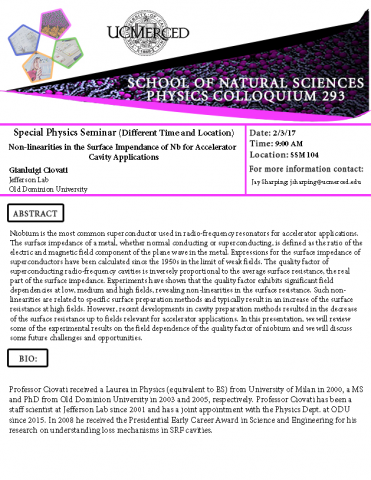
Gianluigi Ciovati, Old Dominion University
Abstract:
Niobium is the most common superconductor used in radio-frequency resonators for accelerator applications. The surface impedance of a metal, whether normal conducting or superconducting, is defined as the ratio of the electric and magnetic field component of the plane wave in the metal. Expressions for the surface impedance of superconductors have been calculated since the 1950s in the limit of weak fields. The quality factor of superconducting radio-frequency cavities is inversely proportional to the average surface resistance, the real part of the surface impedance. Experiments have shown that the quality factor exhibits significant field dependencies at low, medium and high fields, revealing non-linearities in the surface resistance. Such non- linearities are related to specific surface preparation methods and typically result in an increase of the surface resistance at high fields. However, recent developments in cavity preparation methods resulted in the decrease of the surface resistance up to fields relevant for accelerator applications. In this presentation, we will review some of the experimental results on the field dependence of the quality factor of niobium and we will discuss some future challenges and opportunities.



